#perce pearce
Explore tagged Tumblr posts
Text
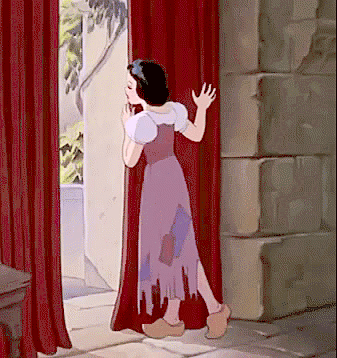
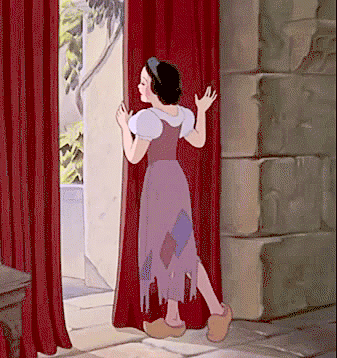

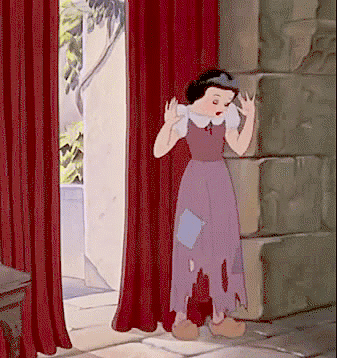

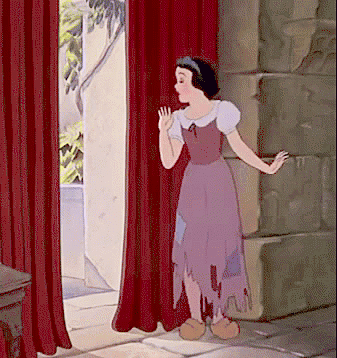
♫"One heart, tenderly beating, ever entreating, constant and true"♫
-Snow White and the Seven Dwarfs (1937)
Directed by: David Hand, Wilfred Jackson, Ben Sharpsteen, Perce Pearce, Larry Morey, and William Cottrell
#snow white and the seven dwarfs#disney#disneyaddict#disneyedit#disneyprincesses#walt disney#disneyworld#fyeahmovies#fyeahdisney#filmgifs#moviegifs#cinemapix#film#david hand#wilfred jackson#ben sharpsteen#perce pearce#larry morey#william cottrell#waltdisneydaily#disneyfeverdaily
746 notes
·
View notes
Photo
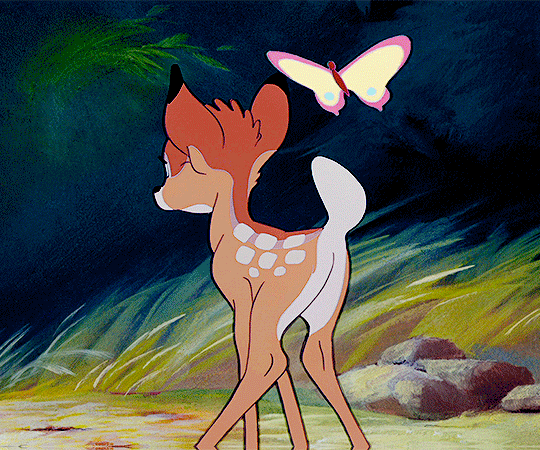
BAMBI 1942
If you can't say something nice, don't say nothing at all.
#bambi#1942#john sutherland#sam edwards#paula winslowe#sterling holloway#will wright#ann gills#fred shields#margaret lee#mary lansing#perce pearce
27 notes
·
View notes
Text



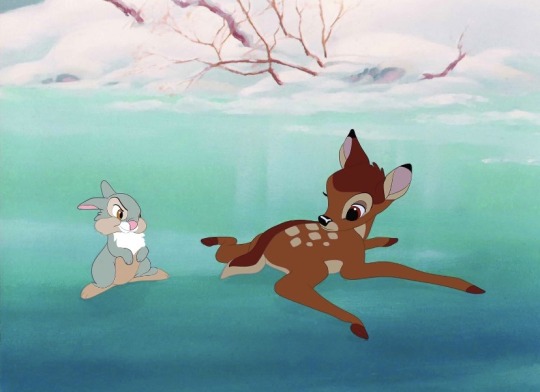
Bambi (1942)
"You know, just the other day, I was talking to myself about you, and we were wondering what had become of you."
#bambi#felix salten#perce pearce#larry morey#vernon stallings#mel shaw#carl fallberg#chuck couch#ralph wright#james algar#samuel armstrong#david hand#graham heid#bill roberts#paul satterfield#norman wright#arthur davis#clyde geronimi#hardie albright#stan alexander#bobette audrey#peter behn
7 notes
·
View notes
Text
Snow White and the Seven Dwarfs (1937)
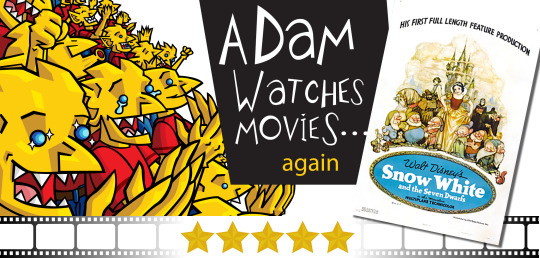
There are many factors to consider when judging a film’s merit. An important but often overlooked factor is the film’s ambition. How many chances does it take and how far does it push the envelope? Under that criteria, Snow White and the Seven Dwarfs couldn’t possibly score higher. If there was a full-length animated film released in American cinemas before this one, it's been forgotten to time and it certainly didn't leave the same mark as this one. Now approaching 100 years old, there's no other movie quite like Snow White. You watch it as a child and enjoy the familiar story. You appreciate it for wholly different reasons as an adult.
In a faraway land lives the beautiful and kind Princess Snow White (voiced by Adriana Caselotti), the envy of her wicked and vain stepmother (Lucille La Verne). When the Queen’s magic mirror reveals that Snow White has become more beautiful than she, the Queen sends the young princess to the woods to be murdered. Following her escape, Snow White stumbles upon a small cottage and is taken in by the seven little men who live there.
Traditionally animated films age incredibly gracefully. Whereas you can see the limitations Toy Story and its early descendants had to struggle with, Snow White and the Seven Dwarfs looks as sharp as the day it was released. Snow White is not like the rubber-limbed Olive Oil from Popeye’s cartoons or any character from the many Disney animated shorts that preceded her. The fact that she can move alongside the decidedly anthropomorphized woodland creatures she befriends and the seven dwarves - all of which have cartoonish faces to match their outlandish personalities - is impressive.
Also helping the film remain timeless are the story and writing. There are no pop culture references, no fourth wall breaks, no ironic twists or subversions of the source material. There doesn’t need to be. Snow White simply is. Similarly, the songs are not the kind you’d hear playing on the top charts. They weren't made to sell records. They were made for the story. They’re used to develop the characters and move the plot forward. That doesn't mean they're not catchy. I think anyone who’s seen the film will be tempted to play Whistle While You Work whenever they begin cleaning and once you hear the dwarves’ Heigh Ho!, it becomes a part of your vocabulary. Nothing in Snow White feels like it was made to be more than part of the movie. There are no characters made to be turned into toys, for example. In that way, it feels more earnest than any other Disney film.
That's nice, but what really matters is how entertaining the film is. While this is a straightforward telling of a well-known, story (assuming you don't call the musical numbers "twists"), “Snow White” finds plenty of ways to make you care about its animated characters. There are many laughs throughout, courtesy of the seven dwarves. Her animal friends also provide memorable chuckles as they figure out inventive ways to help despite their limited sizes or limbs. My favorite has to be the deer who uses his antlers as a way to transport dirty laundry.
There's also drama and romance, courtesy of Snow White herself. Our heroine is so sweet and innocent your heart just can’t resist. When she talks about the handsome prince she dreams of meeting once again, it’s hard not to get as swept up in the emotions of the scene. There’s also a little bit of horror thrown in too - though only small children would be actually frightened. It makes the scenes when Snow White makes her escape in the dark woods and later, when the wicked Queen comes looking for her particularly memorable. On top of the emotions are the outstanding visuals. Even if you don't "know", I think a part of you knows or can tell everything you see was hand-painted and painstakingly put together. If there’s one criticism I can throw towards the movie, it’s that the ending feels abrupt. It still fits within the fairytale motif, but I wouldn’t mind if it was even 30 seconds longer.
There is so much to say about Snow White and the Seven Dwarfs. The visuals, the characters, the direction, the story, the songs… every aspect of the filmmaking could be the subject of a thesis. It's a film that was destined for immortality and I think people knew it as soon as it was released. Even today, it still stands triumphant as one of the greatest films - animated or otherwise- ever made for its place in history, but also for the way it brings a particular kind of story to life. (November 12, 2022)
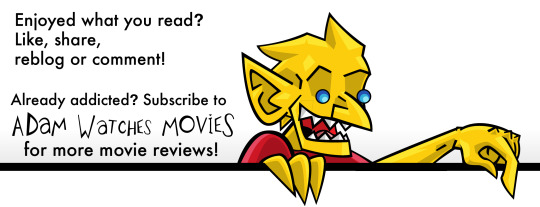
#Snow White and the Seven Dwarfs#movies#films#movie reviews#film reviews#Disney Movies#Disney Films#David Hand#Perce Pearce#William Cottrell#Larry Morey#Wilfred Jackson#Ben Sharpsteen#Ted Sears#Richard Creedon#Otto Englander#Dick Rickard#Earl Hurd#Merrill De Maris#Dorothy Ann Blank#Webb Smith#Adriana Caselotti#Lucille La Verne
4 notes
·
View notes
Text

Snow White and the Seven Dwarfs (1937)
#snow white#snow white and the seven dwarfs#1930s#disney#walt disney#david hand#ben sharpsteen#larry morrey#wilfred jackson#william cottrell#perce pearce#Bob Broughton
0 notes
Text

Snow White and the Seven Dwarfs (1937)
9/10
0 notes
Text
WATCH_DOGS THE NEXT BLOOD
💥NEW GENERATION💥



7 notes
·
View notes
Text








Snow White and the Seven Dwarfs - (1937) dir. David Hand, Ben Sharpsteen, Wilfred Jackson, Perce Pearce, William Cottrell, Larry Morey
#Snow White and the Seven Dwarfs#Walt Disney#disneydaily#disneyfeverdaily#disneyfilms#disneyedit#filmgifs#filmedit#Disney#Movie
371 notes
·
View notes
Text








Snow White and the Seven Dwarfs (1937) dir. by Perce Pearce, William Cottrell, Larry Morey, Wilfred Jackson, and Ben Sharpsteen.
129 notes
·
View notes
Photo

Chief Joseph (Eastman's Biography)
Chief Joseph (Heinmot Tooyalakekt, l. 1840-1904) was the leader of the Wallowa band of the Nez Perce Native American nation, who, in 1877, resisted forced relocation from his ancestral lands in the Wallowa Valley of northeastern Oregon and led his people on a 1,170-mile (1,900 km) flight toward Canada in hopes of asylum with Sitting Bull (l. c. 1837-1890).
The flight of the Nez Perce under Chief Joseph, a running battle in which he defeated US forces in every engagement, is known as the Nez Perce War, and newspaper accounts of the day, often hostile to Native American efforts to preserve their lands, were remarkably sympathetic to Chief Joseph's cause. When he and his people were a mere 40 miles (64 km) from the Canadian border, they were surprised by a US cavalry attack and forced to surrender.
Although the treaty between the Nez Pearce and the US government stipulated their relocation to a reservation in Idaho, briefly holding them in Montana Territory, they were instead quickly sent to Fort Leavenworth, Kansas, and held as prisoners of war before being shipped to Indian Territory (present-day Oklahoma), and finally to the Colville Indian Reservation in the state of Washington.
Chief Joseph spent the rest of his life appealing to US officials for the return of the lands of the Nez Perce in the Wallowa Valley, but his requests were denied. He is said to have died of a broken heart on the reservation in Washington on 21 September 1904.
In 1968 the US Post Office issued a stamp in his honor and memorial statues of Chief Joseph have been raised in many of the western states of the USA, but the lands of the Nez Perce have never been returned to them and there has never been any official acknowledgment of the outright theft of those lands by Euro-Americans.
Flight of the Nez Perce and Key Battle Sites of 1877
United States Department of Agriculture-Forest Service (Public Domain)
Text
The following account is taken from the 1939 edition of Indian Heroes and Great Chieftains (1916) by the Sioux physician and author Charles A. Eastman (also known as Ohiyesa, l. 1858-1939), republished in 2016. Eastman interviewed Chief Joseph in 1897 and prepared the following, which, as he said, was authenticated by General Nelson A. Miles, one of his former adversaries. The following has been edited for space, but the full account is below in the External Links section.
The Nez Perce tribe of Indians, like other tribes too large to be united under one chief, was composed of several bands, each distinct in sovereignty. It was a loose confederacy. Joseph and his people occupied the Imnaha or Grande Ronde valley in Oregon, which was considered perhaps the finest land in that part of the country.
When the last treaty was entered into by some of the bands of the Nez Perce, Joseph's band was at Lapwai, Idaho, and had nothing to do with the agreement. The elder chief in dying had counseled his son, then not more than twenty-two or twenty-three years of age, never to part with their home, assuring him that he had signed no papers. These peaceful non-treaty Indians did not even know what land had been ceded until the agent read them the government order to leave. Of course, they refused. You and I would have done the same.
When the agent failed to move them, he and the would-be settlers called upon the army to force them to be good, namely, without a murmur to leave their pleasant inheritance in the hands of a crowd of greedy grafters. General O. O. Howard, the Christian soldier, was sent to do the work.
He had a long council with Joseph and his leading men, telling them they must obey the order or be driven out by force. We may be sure that he presented this hard alternative reluctantly. Joseph was a mere youth without experience in war or public affairs. He had been well brought up in obedience to parental wisdom and with his brother Ollicut had attended Missionary Spaulding's school where they had listened to the story of Christ and his religion of brotherhood. He now replied in his simple way that neither he nor his father had ever made any treaty disposing of their country, that no other band of the Nez Perces was authorized to speak for them, and it would seem a mighty injustice and unkindness to dispossess a friendly band.
General Howard told them in effect that they had no rights, no voice in the matter: they had only to obey. Although some of the lesser chiefs counseled revolt then and there, Joseph maintained his self-control, seeking to calm his people, and still groping for a peaceful settlement of their difficulties. He finally asked for thirty days' time in which to find and dispose of their stock, and this was granted.
Joseph steadfastly held his immediate followers to their promise, but the land-grabbers were impatient, and did everything in their power to bring about an immediate crisis so as to hasten the eviction of the Indians. Depredations were committed, and finally the Indians, or some of them, retaliated, which was just what their enemies had been looking for. There might be a score of white men murdered among themselves on the frontier and no outsider would ever hear about it, but if one were injured by an Indian— "Down with the bloodthirsty savages!" was the cry.
Joseph told me himself that during all of those thirty days a tremendous pressure was brought upon him by his own people to resist the government order. "The worst of it was," said he, "that everything they said was true; besides"—he paused for a moment— "it seemed very soon for me to forget my father's dying words, 'Do not give up our home!'" Knowing as I do just what this would mean to an Indian, I felt for him deeply.
Among the opposition leaders were Too-hul-hul-sote, White Bird, and Looking Glass, all of them strong men and respected by the Indians; while on the other side were men built up by emissaries of the government for their own purposes and advertised as "great friendly chiefs." As a rule, such men are unworthy, and this is so well known to the Indians that it makes them distrustful of the government's sincerity at the start. Moreover, while Indians unqualifiedly say what they mean, the whites have a hundred ways of saying what they do not mean.
…the whites were unduly impatient to clear the coveted valley, and by their insolence they aggravated to the danger point an already strained situation. The murder of an Indian was the climax and this happened in the absence of the young chief. He returned to find the leaders determined to die fighting. The nature of the country was in their favor and at least they could give the army a chase, but how long they could hold out they did not know. Even Joseph's younger brother Ollicut was won over. There was nothing for him to do but fight; and then and there began the peaceful Joseph's career as a general of unsurpassed strategy in conducting one of the most masterly retreats in history.
Chief Joseph and Family c. 1880
F. M. Sargent (Public Domain)
This is not my judgment, but the unbiased opinion of men whose knowledge and experience fit them to render it. Bear in mind that these people were not scalp hunters like the Sioux, Cheyenne, and Utes, but peaceful hunters and fishermen. The first council of war was a strange business to Joseph. He had only this to say to his people:
"I have tried to save you from suffering and sorrow. Resistance means all of that. We are few. They are many. You can see all we have at a glance. They have food and ammunition in abundance. We must suffer great hardship and loss." After this speech, he quietly began his plans for the defense.
The main plan of campaign was to engineer a successful retreat into Montana and there form a junction with the hostile Sioux and Cheyenne under Sitting Bull…
It was decided that the main rear guard should meet General Howard's command in White Bird Canyon, and every detail was planned in advance, yet left flexible according to Indian custom, giving each leader freedom to act according to circumstances. Perhaps no better ambush was ever planned than the one Chief Joseph set for the shrewd and experienced General Howard. He expected to be hotly pursued, but he calculated that the pursuing force would consist of not more than two hundred and fifty soldiers. He prepared false trails to mislead them into thinking that he was about to cross or had crossed the Salmon River, which he had no thought of doing at that time. Some of the tents were pitched in plain sight, while the women and children were hidden on the inaccessible ridges, and the men concealed in the canyon ready to fire upon the soldiers with deadly effect with scarcely any danger to themselves. They could even roll rocks upon them.
In a very few minutes the troops had learned a lesson. The soldiers showed some fight, but a large body of frontiersmen who accompanied them were soon in disorder. The warriors chased them nearly ten miles, securing rifles and much ammunition, and killing and wounding many.
The Nez Perces next crossed the river, made a detour, and recrossed it at another point, then took their way eastward. All this was by way of delaying pursuit…
Chief Joseph US Postage Stamp
National Postal Museum (CC BY-NC-ND)
Meanwhile General Howard had sent a dispatch to Colonel Gibbons, with orders to head Joseph off, which he undertook to do at the Montana end of the Lolo Trail. The wily commander had no knowledge of this move, but he was not to be surprised. He was too brainy for his pursuers, whom he constantly outwitted, and only gave battle when he was ready. There at the Big Hole Pass he met Colonel Gibbons' fresh troops and pressed them close.
He sent a party under his brother Ollicut to harass Gibbons' rear and rout the pack mules, thus throwing him on the defensive and causing him to send for help, while Joseph continued his masterly retreat toward the Yellowstone Park, then a wilderness. However, this was but little advantage to him, since he must necessarily leave a broad trail, and the army was augmenting its columns day by day with celebrated scouts, both white and Indian. The two commands came together, and although General Howard says their horses were by this time worn out, and by inference the men as well, they persisted on the trail of a party encumbered by women and children, the old, sick, and wounded.
It was decided to send a detachment of cavalry under Bacon, to Tash Pass, the gateway of the National Park, which Joseph would have to pass, with orders to detain him there until the rest could come up with them. Here is what General Howard says of the affair. "Bacon got into position soon enough, but he did not have the heart to fight the Indians on account of their number." Meanwhile another incident had occurred. Right under the eyes of the chosen scouts and vigilant sentinels, Joseph's warriors fired upon the army camp at night and ran off their mules. He went straight on toward the park, where Lieutenant Bacon let him get by and pass through the narrow gateway without firing a shot…
However, this succession of defeats did not discourage General Howard, who kept on with as many of his men as were able to carry a gun, meanwhile sending dispatches to all the frontier posts with orders to intercept Joseph if possible. Sturgis tried to stop him as the Indians entered the Park, but they did not meet until he was about to come out, when there was another fight, with Joseph again victorious. General Howard came upon the battlefield soon afterward and saw that the Indians were off again, and from here he sent fresh messages to General Miles, asking for reinforcements.
Joseph had now turned northeastward toward the Upper Missouri. He told me that when he got into that part of the country he knew he was very near the Canadian line and could not be far from Sitting Bull, with whom he desired to form an alliance. He also believed that he had cleared all the forts. Therefore, he went more slowly and tried to give his people some rest. Some of their best men had been killed or wounded in battle, and the wounded were a great burden to him; nevertheless, they were carried and tended patiently all during this wonderful flight. Not one was ever left behind.
Statue of Young Chief Joseph
Visitor7 (CC BY-SA)
It is the general belief that Indians are cruel and revengeful, and surely these people had reason to hate the race who had driven them from their homes if any people ever had. Yet it is a fact that when Joseph met visitors and travelers in the park, some of whom were women, he allowed them to pass unharmed, and in at least one instance let them have horses.
He told me that he gave strict orders to his men not to kill any women or children. He wished to meet his adversaries according to their own standards of warfare, but he afterward learned that in spite of professions of humanity, white soldiers have not seldom been known to kill women and children indiscriminately…
The Bittersweet valley, which they had now entered, was full of game, and the Indians hunted for food, while resting their worn-out ponies. One morning they had a council to which Joseph rode over bareback, as they had camped in two divisions a little apart. His fifteen-year-old daughter went with him. They discussed sending runners to Sitting Bull to ascertain his exact whereabouts and whether it would be agreeable to him to join forces with the Nez Perces. In the midst of the council, a force of United States cavalry charged down the hill between the two camps. This once Joseph was surprised. He had seen no trace of the soldiers and had somewhat relaxed his vigilance.
He told his little daughter to stay where she was, and himself cut right through the cavalry and rode up to his own teepee, where his wife met him at the door with his rifle, crying: "Here is your gun, husband!" The warriors quickly gathered and pressed the soldiers so hard that they had to withdraw. Meanwhile one set of the people fled while Joseph's own band entrenched themselves in a very favorable position from which they could not easily be dislodged.
General Miles had received and acted on General Howard's message, and he now sent one of his officers with some Indian scouts into Joseph's camp to negotiate with the chief. Meantime Howard and Sturgis came up with the encampment, and Howard had with him two friendly Nez Perce scouts who were directed to talk to Joseph in his own language. He decided that there was nothing to do but surrender…
Even now, he was not actually conquered. He was well entrenched; his people were willing to die fighting; but the army of the United States offered peace and he agreed, as he said, out of pity for his suffering people. Some of his warriors still refused to surrender and slipped out of the camp at night and through the lines. Joseph had, as he told me, between three and four hundred fighting men in the beginning, which means over one thousand persons, and of these several hundred surrendered with him.
His own story of the conditions he made was prepared by himself with my help in 1897, when he came to Washington to present his grievances. I sat up with him nearly all of one night; and I may add here that we took the document to General Miles who was then stationed in Washington, before presenting it to the Department. The General said that every word of it was true.
In the first place, his people were to be kept at Fort Keogh, Montana, over the winter and then returned to their reservation. Instead, they were taken to Fort Leavenworth, Kansas, and placed between a lagoon and the Missouri River, where the sanitary conditions made havoc with them. Those who did not die were then taken to the Indian Territory, where the health situation was even worse.
Joseph appealed to the government again and again, and at last by the help of Bishops Whipple and Hare he was moved to the Colville reservation in Washington. Here the land was very poor, unlike their own fertile valley. General Miles said to the chief that he had recommended and urged that their agreement be kept, but the politicians and the people who occupied the Indians' land declared they were afraid if he returned, he would break out again and murder innocent white settlers! What irony!
The great Chief Joseph died broken-spirited and broken-hearted. He did not hate the whites, for there was nothing small about him, and when he laid down his weapons he would not fight on with his mind. But he was profoundly disappointed in the claims of a Christian civilization. I call him great because he was simple and honest.
Without education or special training, he demonstrated his ability to lead and to fight when justice demanded. He outgeneraled the best and most experienced commanders in the army of the United States, although their troops were well provisioned, well-armed, and above all unencumbered. He was great, finally, because he never boasted of his remarkable feat. I am proud of him because he was a true American.
Continue reading...
45 notes
·
View notes
Text
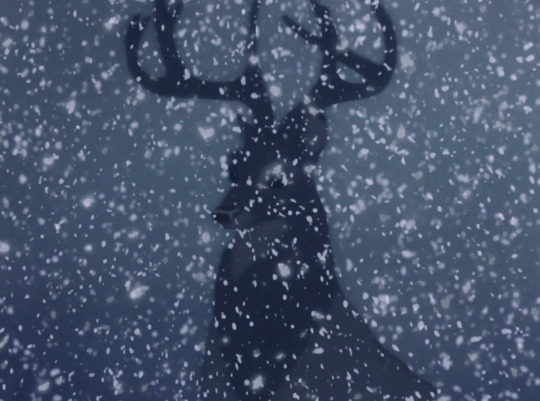


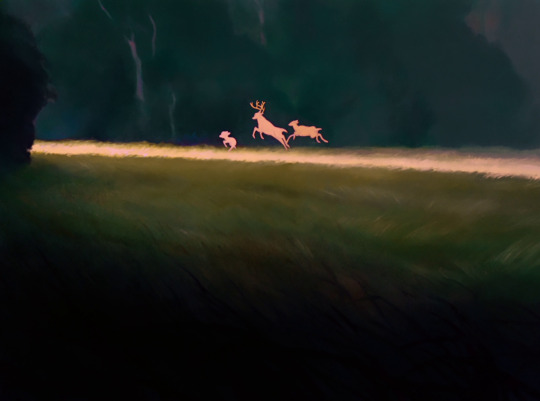

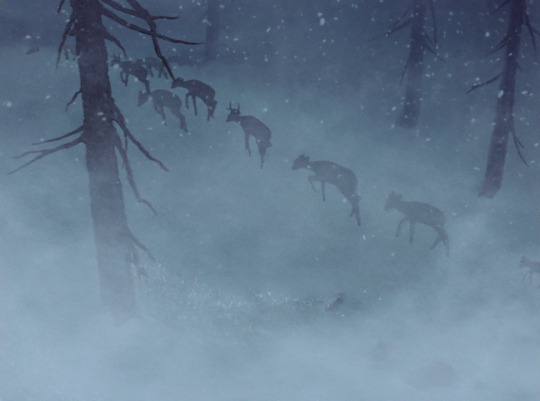
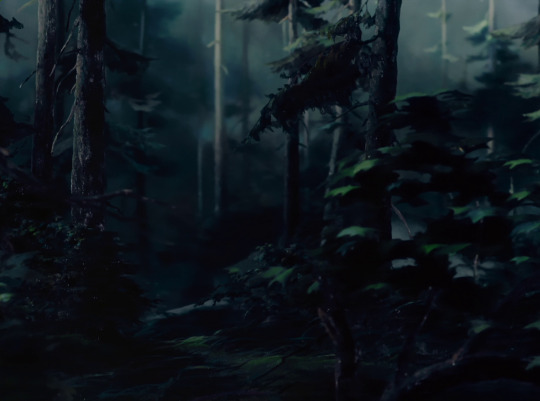
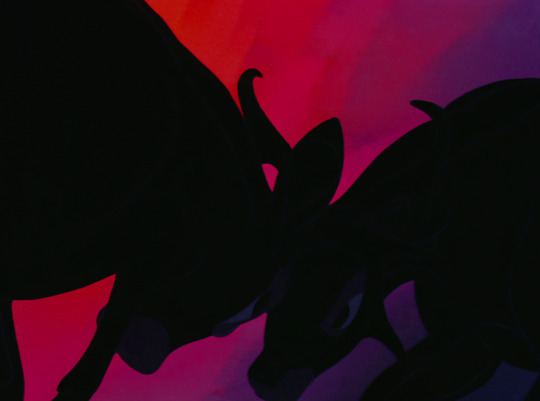


Bambi, 1942.
Dir. David Hand (supervising director) | Writ. Perce Pearce (story direction) & Larry Morey (story adaptation)
#bambi#disney#1940s#animation#coming of age film#family film#10 frames#putting the credits on these early disney flicks is such a pain. so i am only putting the supervisors and for once no DOP or Art Direction#sorry
61 notes
·
View notes
Text
I would like to appreciate a few dozen people and a couple companies.
Jacob and Wilhelm Grimm, R.K.O Radio Pictures Inc, R•C•A•Victor "High Fidelity" Sound System, Walt Disney, David Hand, Perce Pearce, William Cottrell, Larry Morey, Ben Sharpsteen, Hamilton Luske, Fred Moore, Vladimir Tytla, Norman Ferguson, Charles Philippi, Tom Codrick, Hugh Hennesy, Gustaf Tenggren, Terrell Stapp, Kenneth Anderson, Mc Laren Stewart, Kendall O'Conner, Harold Miles, Hazel Sewell, Samuel Armstrong, Mique Nelson, Phil Dike, Merle Cox, Ray Lockrem, Claude Coats, Maurice Noble, Ted Sears, Richard Creedon, Otto Englander, Dick Rickard, Earl Hurd, Merrill De Maris, Dorothy Ann Blank, Webb Smith, Albert Hurter, Joe Grant, Frank Churchill, Leigh Harline, Paul Smith, Frank Thomas, Les Clark, Dick Lundy, Fred Spencer, Arthur Babbitt, Bill Roberts, Eric Larson, Bernard Garbutt, Milton Kahl, Grim Natwick, Robert Stokes, Jack Campbell, James Algar, Marvin Woodward, Al Eugster, James Culhane, Cy Young, Stan Quackenhush, Joshua Meador, Ward Kimball, Ugo D'Orsi, Woolie Reitherman, George Rowley and Robert Martsch.
Without these people, companies and systems Snow White and the Seven Dwarfs wouldn't be a thing and wouldn't exist. So really I appreciate these people and things so much.
— Snow Rants
0 notes
Photo

Snow White Movie Poster Many Framing Options Snow White and the Seven Dwarfs (1937 film) Poster Molding:Professional 1" Flat Top Black (solid-wood) 1.5 inch mat. . Includes glass and metal wire for hanging on your wall. Print: Bonded & Dry-mounted Print on Foam Core. Perfectly flat and smooth finish High Resolution and Quality Full Color Poster Print The double mat adds depth giving the display a unique "looking through a window'' appearance. The calendar print is bonded to foam core on a hot vacuum press. This bonding gives the print a perfect flat and smooth texture. This process also insures the print will never fold or fade with age or moisture. This wonderful display makes a thoughtful and original gift containing a classic vintage touch yet modern design, allowing it to fit alongside both modern and classic decor. BUY WITH CONFIDENCE. ALL OF MY DELICATE ITEMS ARE SHIPPED WITH A SPECIAL 3 LAYER PROTECTION SYSTEM. Snow White and the Seven Dwarfs is a 1937 American animated musical fantasy film produced by Walt Disney Productions and released by RKO Radio Pictures. Based on the 1812 German fairy tale by the Brothers Grimm, it is the first full-length traditionally animated feature film and the first Disney animated feature film. The story was adapted by storyboard artists Dorothy Ann Blank, Richard Creedon, Merrill De Maris, Otto Englander, Earl Hurd, Dick Rickard, Ted Sears and Webb Smith. David Hand was the supervising director, while William Cottrell, Wilfred Jackson, Larry Morey, Perce Pearce, and Ben Sharpsteen directed the film's individual sequences. Snow White premiered at the Carthay Circle Theatre in Los Angeles, California on December 21, 1937. Despite initial doubts from the film industry, it was a critical and commercial success and, with international earnings of more than $8 million during its initial release (compared to its $1.5 million budget), it briefly held the record of highest-grossing sound film at the time. The popularity of the film has led to its being re-released theatrically many times, until its home video release in the 1990s. Adjusted for inflation, it is one of the top-ten performers at the North American box office and the highest-grossing animated film. Worldwide, its inflation-adjusted earnings top the animation list.[3] Snow White was nominated for Best Musical Score at the Academy Awards in 1938, and the next year, producer Walt Disney was awarded an honorary Oscar for the film. This award was unique, consisting of one normal-sized, plus seven miniature Oscar statuettes. They were presented to Disney by Shirley Temple.[4]
#office gift#office decor#walt disney#childrens room decor#kids room decor#disney poster#snow white#seven dwarves#disney collectibles#disney memorabilia#vintage disney#baby shower gift
0 notes
Text
Round 1, Match 19
Amadeus (dir. Miloš Forman, 1984) VS Snow White and the Seven Dwarfs (dir. David Hand, Perce Pearce, William Cottrell, Larry Morey, Wilfred Jackson, Ben Sharpsteen, 1937)


Amadeus is one of the best movies ever made, full stop. Tom Hulce? Great. F. Murray Abraham? A revelation. This movie just fucking rocks.
Snow White is one of the most important movies ever made, but it clearly shows that Disney had no idea how to make a feature. The film just comes across as a series of shorts stitched together into one longer piece.
WINNER: Amadeus (and I say this a Disney adult)
0 notes
Text
Aiden Pearce ex military?

7 notes
·
View notes
Text
Snow White and the Seven Dwarfs (1937) -(David Hand, Wilfred Jackson, William Cottrell, Larry Morey, Perce Pearce, Ben Sharpsteen)
Snow White and the Seven Dwarfs is an American animated movie, produced by Walt Disney Productions and was realsead by RKO Radio Pictures. It was first full length traditionally animated feature film.
Technique Section:-
In 1930’s early color processes came into use and also multiplane camera were used for better animation. Disney sent his animators to Chouinard Art Institution, to ensure that the animators get the right skill about cameras and realistic movements which in return will make the animations more realistic to audience. For giving his animators more understanding of the concept, Disney also brought animals into studio and hired actors for better griping the main idea. Snow White had been largely finised by the time the multiplane camera had been completed, Disney ordered some scenes to be re-drawn to use new effects in the film. Mostly techniques like Cutout, silhouette and stop motion was used while filming of this animation.
Representation Section:-
The grimm fairy tale gets color to its film for the first time for Disney’s animated cartoon film. It is story of a beautiful lady Snow white, who gets tortured by her setpmother, who also gave orders to murder her. later on she discovers that she is still alive and is hiding in a cottage with seven drawfs. Knowing this makes the setpmother angry and leds her to poison Snow White with poisonous apple, which makes her to fall into a death-like sleep that can be broken only by a kiss from the prince. This film show the affection of the drawfs towards Snow White. The voice over of Snow White was done by Adriana Caselotti. Walt Disney was looking. for a voice that sounds “away from everyday, as if from another world”.
Reception Section:-
Snow White and the Seven Dwarfs premiered at the Carthy Circle Theatre on December 21, 1937. The film was hugely appreciated and recieved standing ovation from audience. Six days later after its release, Walt Disney and the seven drwafs appeared on the cover of Time magzine. It became a major box-office success and most successful sound film of all time. It was re-released to theaters in 1952, 1958, 1967, 1975,1983 and 1993. in 1983, on its 50th anniversary release, Disney released one of many authorized novelizations of the story. It had a lifetime gross of 418 million dollar across its original release and several reissues.It is the highest-grossing animated film.
Personally watching this animated movie of 1937 in todays era is as enjoyable as it was in 1930’s. Knowing that in 1930’s producers and directors didn't have all the technology we have today for animation makes this film more appreciable.
0 notes